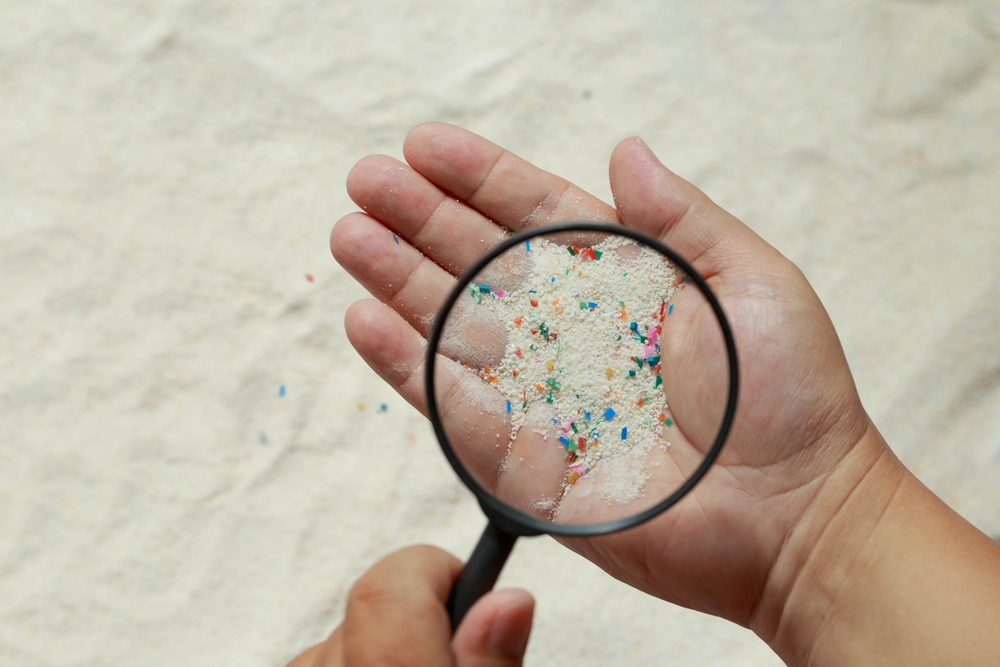Japan Has Created A New Plastic That Dissolves In The Sea Within Hours And Enhances Soil Health.

We live in a world where plastic pollution is no longer a distant problem. It’s here. It’s real. And it’s suffocating the planet.
Every minute, the equivalent of a dump truck full of plastic waste is dumped into our oceans. This isn’t just a statistic—it’s a heartbreaking reality that’s drowning ecosystems, killing marine life, and contaminating our food chains. The plastic that’s discarded today might not break down for hundreds of years. By the time it decomposes, it’ll have already fractured into tiny pieces—microplastics—that will infiltrate every corner of our planet, from the deepest oceans to the air we breathe.
But here’s the good news: amidst the overwhelming darkness of this environmental crisis, there’s a light on the horizon. Japan has developed a groundbreaking solution—one that promises to dissolve in the sea within hours and even enhance the soil once it breaks down on land. This isn’t just a small step forward; it’s a leap toward a cleaner, more sustainable future. The plastic that was once our enemy might just become the ally we need to heal the earth.
This is the kind of innovation we’ve been waiting for. And it couldn’t come at a more critical moment.
The Plastic that Dissolves: Japan’s New Biodegradable Wonder

Imagine a world where the plastic we use every day—packaging, bottles, even straws—could disappear just hours after being discarded into the ocean. No more lasting scars on marine life or our ecosystems. No more plastic slowly breaking down into microplastics, infiltrating every inch of our planet. This is no longer a far-off dream; it’s a reality thanks to a revolutionary new plastic developed by scientists in Japan.
At the heart of this breakthrough is a material that is not only biodegradable but designed to dissolve completely in seawater within hours. Unlike traditional plastics, which stubbornly linger for centuries, this innovation disappears into the ocean, leaving no trace of harmful microplastics behind. This transformation is possible because of its unique composition, crafted using sodium hexametaphosphate—a common food-safe additive—and guanidinium ion-based monomers, which form a cross-linked structure.
The real magic happens when the plastic comes into contact with seawater. As the material dissolves, it doesn’t fragment into harmful particles. Instead, it breaks down into harmless components that quickly vanish, leaving our oceans cleaner, safer, and free from the scourge of plastic waste.
And it’s not just a theoretical solution. This technology is already being tested and perfected by researchers at the RIKEN Center for Emergent Matter Science and the University of Tokyo. Their work represents a tangible, scientifically backed effort to tackle one of the planet’s most pressing issues.
By taking advantage of the natural forces at work in the environment, Japan’s new plastic offers us a chance to undo years of damage. This isn’t just innovation for innovation’s sake—it’s innovation with a purpose. And that purpose is to create a cleaner, more sustainable world for future generations.
Dual Impact: Not Just for the Ocean, But for the Earth
The brilliance of Japan’s new plastic doesn’t stop with its ability to dissolve in the sea. This innovation offers a dual impact—one that not only tackles the problem of marine pollution but also contributes to the health of our soil.
As this new plastic breaks down in the ocean, it leaves no harmful trace behind. But when it decomposes on land, it provides something remarkably valuable: it enriches the soil. Within just ten days of breaking down, the components of the plastic release essential nutrients like phosphorus and nitrogen that are vital to plant growth. These nutrients act like a natural fertilizer, feeding the earth instead of poisoning it.

Consider the implications for agriculture. Imagine biodegradable mulch films that not only protect crops but also feed them as they break down. Picture a world where plastic waste doesn’t burden the land but instead nourishes it. This could be the future we embrace—a future where the materials we use don’t harm the earth but work with it.
In a world increasingly concerned about soil degradation, this plastic offers a solution. It represents an opportunity to integrate sustainability into industries often seen as major contributors to environmental damage. From agriculture to packaging, we could be looking at a new era of products that don’t just minimize harm but actively heal the planet.
This is the beauty of this innovation. It doesn’t just address one part of the problem. It tackles pollution in our oceans and enriches the soil that sustains us. It’s a reminder that real solutions often have far-reaching, interconnected benefits. If we embrace this kind of thinking, we could reshape the way we interact with the world around us.
Addressing the Microplastic Problem

The invisible threat of microplastics is one of the most concerning consequences of plastic pollution. As traditional plastics break down, they don’t disappear—they fragment into tiny particles that infiltrate our oceans, our soil, and even our food. These microplastics are now found everywhere, from the deepest parts of the ocean to the air we breathe. They pose a significant risk not only to marine life but also to human health.
Japan’s new dissolvable plastic offers a powerful solution to this issue. Unlike conventional plastics that fragment into microplastics, this innovative material dissolves completely in seawater, leaving no harmful particles behind. It doesn’t just degrade—it disappears. This ensures that once it’s in the ocean, it won’t break down into toxic microplastics that would continue to poison our ecosystems.
This approach has the potential to halt the cycle of microplastic pollution before it even starts. No longer will we need to worry about the dangerous fragments lingering in our oceans, harming marine life and entering the food chain. The implications are profound: cleaner oceans, healthier ecosystems, and a step toward a future where microplastic contamination is a thing of the past.
By tackling the root of the problem, Japan’s plastic sets a new standard for environmental responsibility. It serves as a reminder that innovation doesn’t just need to address the symptoms of a problem but can eliminate the cause entirely. As this technology becomes more widespread, we could begin to see a world where microplastic pollution is no longer a looming threat—where plastic waste dissolves safely and responsibly, leaving only a healthier planet in its wake.
The Path From Innovation to Widespread Impact

While the innovation behind Japan’s dissolvable plastic is nothing short of groundbreaking, its journey from laboratory to global solution is not without its challenges. As with any new technology, scalability remains a significant hurdle. Can this plastic be produced on an industrial scale at a cost that’s competitive with traditional, petroleum-based plastics? Will manufacturers be able to adopt it widely, and will consumers embrace this new way of thinking about plastic?
The road to widespread adoption will require collaboration across industries, governments, and research communities. Researchers at the RIKEN Center for Emergent Matter Science and the University of Tokyo have made incredible strides, but now the focus must shift to refining the technology and ensuring that it can be mass-produced efficiently and cost-effectively. Regulatory approval, especially for use in food packaging or medical applications, will also be a critical step forward. The plastic’s safety and biodegradability need to be rigorously tested and verified before it can become a staple in consumer products.
Yet, despite these challenges, the potential for positive change is undeniable. We are at a turning point, where the urgency to address plastic pollution has never been more pronounced. The pressure is on to find solutions that can move the needle and offer real-world benefits. This new plastic offers a beacon of hope—a solution that’s both practical and revolutionary, one that could transform entire industries.

As we move forward, there’s reason to be optimistic. The demand for sustainable solutions is growing, and industries around the world are under increasing pressure to reduce their environmental impact. The adoption of technologies like Japan’s dissolvable plastic could accelerate this shift. With the right investment, research, and public support, we could soon see a world where plastic waste is no longer an inescapable problem but a challenge we’ve conquered.
The journey won’t be easy, but it’s worth every step. If we embrace these innovations, if we’re willing to rethink the materials we use and the way we use them, we could rewrite the story of plastic. We could turn it from a villain into an ally, helping us heal the earth rather than harm it. The opportunity to make a difference is within our grasp, and it’s up to us to take action.
Taking Action for a Sustainable Future

Japan’s new dissolvable plastic offers hope in a world overwhelmed by plastic pollution. It’s a breakthrough that could transform how we view and use plastic—by making it dissolve safely in the sea and enrich the soil. But as powerful as this innovation is, its impact depends on how we choose to embrace it.
This is where we all come in. The path to a more sustainable future requires collective action—from governments, businesses, and individuals. By supporting sustainable innovations and making conscious choices about the materials we use, we can contribute to a cleaner, healthier planet for future generations.
Now is the time to act. This new plastic is just the beginning of a movement that can reshape industries and protect our ecosystems. Let’s join together, make the necessary changes, and create a world where innovation works hand in hand with the environment. The change we need is within our grasp—let’s take the first step today.
Featured Image Source: Shutterstock
Loading...






